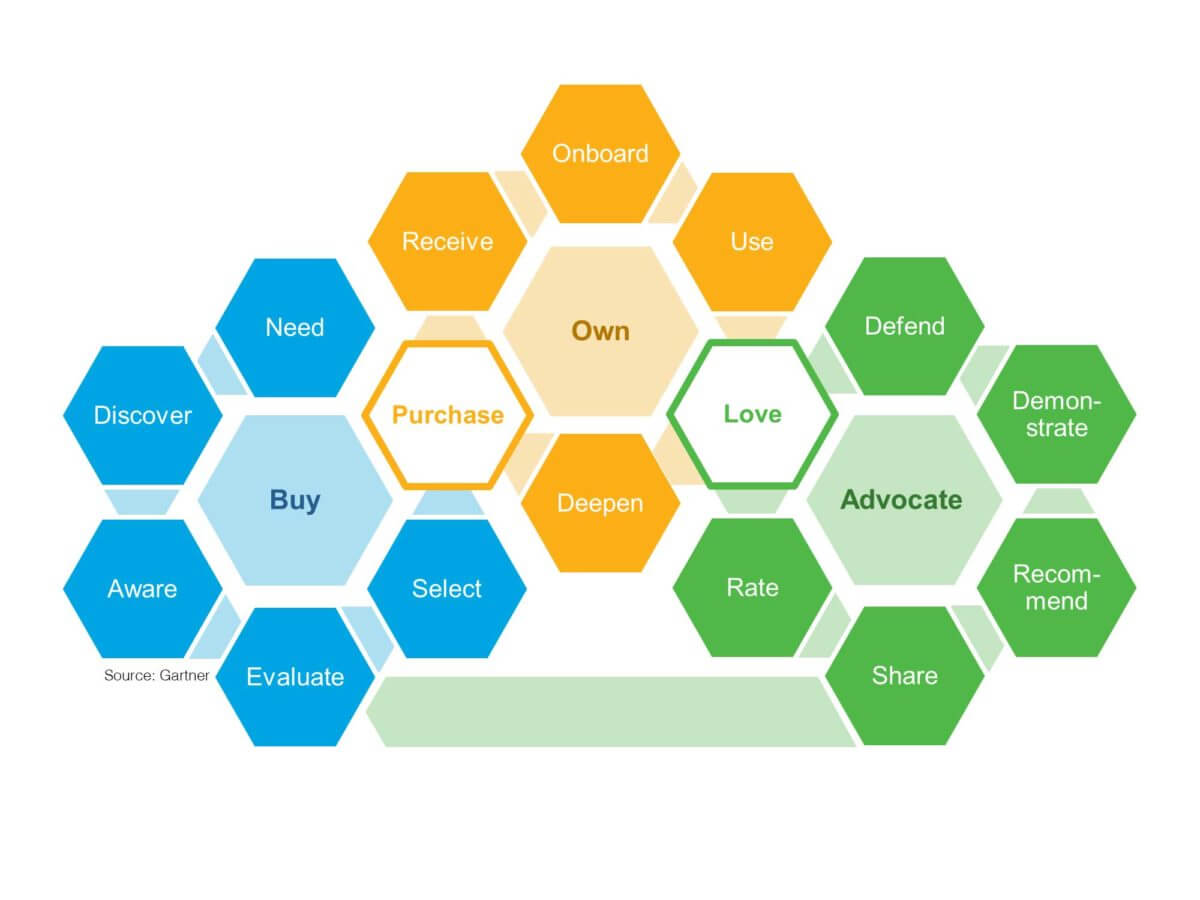As price- and feature-based differentiation erodes under the weight of rising competitive pressure, many companies have turned to customer experience as the new battlefield. It’s a shift that has inspired massive cross-industry, company-wide investments to better understand customers and to design connected, intelligent experiences that anticipate and fulfill their needs.
But for all of their mining of magic moments and minding of the overall customer journey, many companies still treat their digital products like a black box.
Minding the Product Journey
This is in spite of the fact that much of the customer journey itself has migrated into these digital products. Today, key steps on the customer journey are self-directed and self-service with little or no human intervention to guide users through the crucial steps that convert tryers into buyers and buyers into the loyalists and advocates that drive the most efficient growth over time.
Yet many new users are thrust into unfamiliar terrain, left in a wilderness of product complexity they’re forced to navigate on their own.
What happens next is anyone’s guess. Do they find their way? Do they discover features they value? Do they convert from tryers to buyers? Once they’re customers, do they develop usage habits? Do they learn to love the product as something they couldn’t imagine living without?
Maybe not.
It’s a fairly bleak assessment, but that’s roughly the state of product experience today. It’s often left to chance. Awareness, interest, desire and purchase phases are instrumented and orchestrated to inspire and delight prospects, to show them how much you care. Marketing automation tools abound to orchestrate, measure and optimize the buyer’s journey. But it’s often relatively lights out and hands off once new customers start using your products.
Buying is Just the Beginning
During my time as a Gartner analyst, I worked alongside the irrepressible Augie Ray, one of the best, most original thinkers in the world of customer experience. If you don’t follow him yet, you probably should. Augie is credited with developing what Gartner calls the Buy-Own-Advocate Journey–and the rest of us affectionately called The Hexagons of Love.
Gartner’s Buy-Own-Advocate Journey

Let me walk you through it:
- In the ideal state, Buy begins with a need and ends with a purchase;
- Own begins with a purchase and ends with love;
- And Advocate begins with love and ends with repurchase.
What’s most brilliant and incisive about this model is its treatment of the Own phase as the lynchpin for loyalty and advocacy. Here, the goal is nothing short of love, which is a sentiment every product leader should appreciate. What’s the reward for love? Loyalty and advocacy.
But, too often, the Own phase is neglected as companies treat the Buy phase as the more important work. The reality is that, for digital product companies in particular, this creates renewal risk and missed opportunities for driving growth.
Back to the Gartner model:
- Onboard — users should be welcomed into the product with personalized messages and guidance that anticipate and answer their questions and needs, guiding them through the steps necessary to achieve confidence, familiarity and habit-forming usage.
- Use — they should receive targeted communication right inside the product based on where they are in their own product journey, guiding them to discover and unlock progressive layers of value as they use the product.
- Deepen — they should receive targeted cross-sell and upsell offers inside the product as they signal indications of need and readiness through their usage and sentiment.
When digital product experiences are thoughtfully designed and orchestrated like this, Buy, Own and Advocate come together as a connected, intelligent experience. The result? An insurance policy on customer retention and a flywheel for growth.
The point is that when these experiences are designed with the goal of product love in mind, users become your most passionate advocates. When they’re left to chance, users churn.
And when your product is a black box, you probably never even see it coming.


